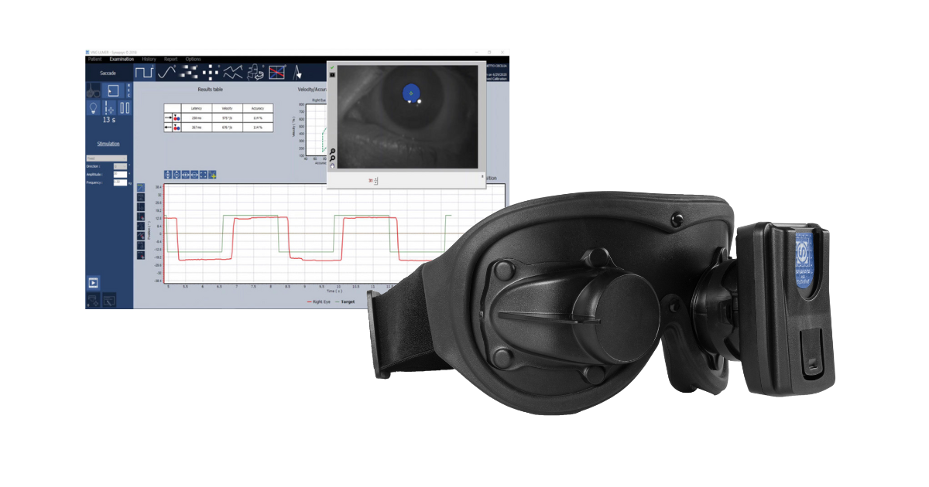Question
Why should I try the SYNAPSYS VNG wireless system by Inventis for my patients?
Answer
SYNAPSYS VNG is a video nystagmography system created by Inventis that is ideal for a complete vestibular analysis. Otolaryngologists, audiologists, and physiotherapists can investigate vestibular functionality by finely analyzing eye movements. Automatic post-processing of the image helps identifies the nystagmus. By using state-of-the-art infrared cameras mounted on goggles, the patient’s eye movements are recorded by the software. Thanks to the eye tracking system, VNG instantly detects the pupils without any adjustment required, even when it comes to difficult situations such as dark eyelids.
SYNAPSYS VNG offers a wide and complete range of tests: Saccade, Smooth Pursuit, Gaze, Optokinetic, Nystagmus, Caloric, Kinetic, and Subjective Visual Virtual. The presence of complete normative data with which to compare results, the possibility to insert markers in real-time and select different tracking modes (graphs, tables), as well as the available pre-loaded test protocols, make the software extremely reliable and easy to use.
The wireless camera grants an unparallel user experience in terms of patient mobility, freedom of movement, and flexibility of use.
For a long time, we have worked to optimize WI-FI communication and obtain full-resolution videos (no low-quality regions) with the aim of speeding up the execution of vestibular tests and improving users' understanding of video images in order to formulate more precise diagnoses.
As this is a wireless system, the maximum flexibility of movement is guaranteed for both the patient, who wears the mask, and for the operator who manages the test and provides the instructions to the patient. This is a great advantage in particular with kinetic tests.
The wireless camera also supports a binocular system. The simultaneous use of two cameras (both wireless) so the possibility to capture the visual and graphic analysis of the nystagmus kinetics on both eyes at the same time, not only reduces the test timing but also allows to detect possible asymmetries, and evident signs of pathologies.
SYNAPSYS VNG is also available with a standard wired camera and, optionally, a second camera can be added to allow binocular recordings. An advanced high-frequency bi-ocular analysis is also available with the Visio Mask. Specifically designed for oculomotor testing, it analyses both eyes simultaneously, allowing a true open-field view.

Figure 1. Inventis line of video nystagmography: SYNAPSYS VNG software and wireless camera.
SYNAPSYS VNG can also be combined with the rotary chair to complete your battery of videonystagmographic tests with rotational kinetic exams. Sixteen stimulation waveforms are available, including various sinewave forms, multifrequency, speed step, and sudden stop tests.
SYNAPSYS VNG is fully controllable by the software Maestro, the core of your Inventis equipment set-up.
With Maestro, you can manage patient data, and run, review and combine exams.
SYNAPSYS VNG KEY BENEFITS
- State-of-the-art: Wi-fi technology that guarantees a stable connection
- Customizable protocols
- Unique hardware, scalable system
- Adaptable for children of all ages
- Extremely precise eye-tracking system
- Automatic calibration at the beginning of the test
Resources for More Information
For more information, visit https://www.inventis.it/en-na

